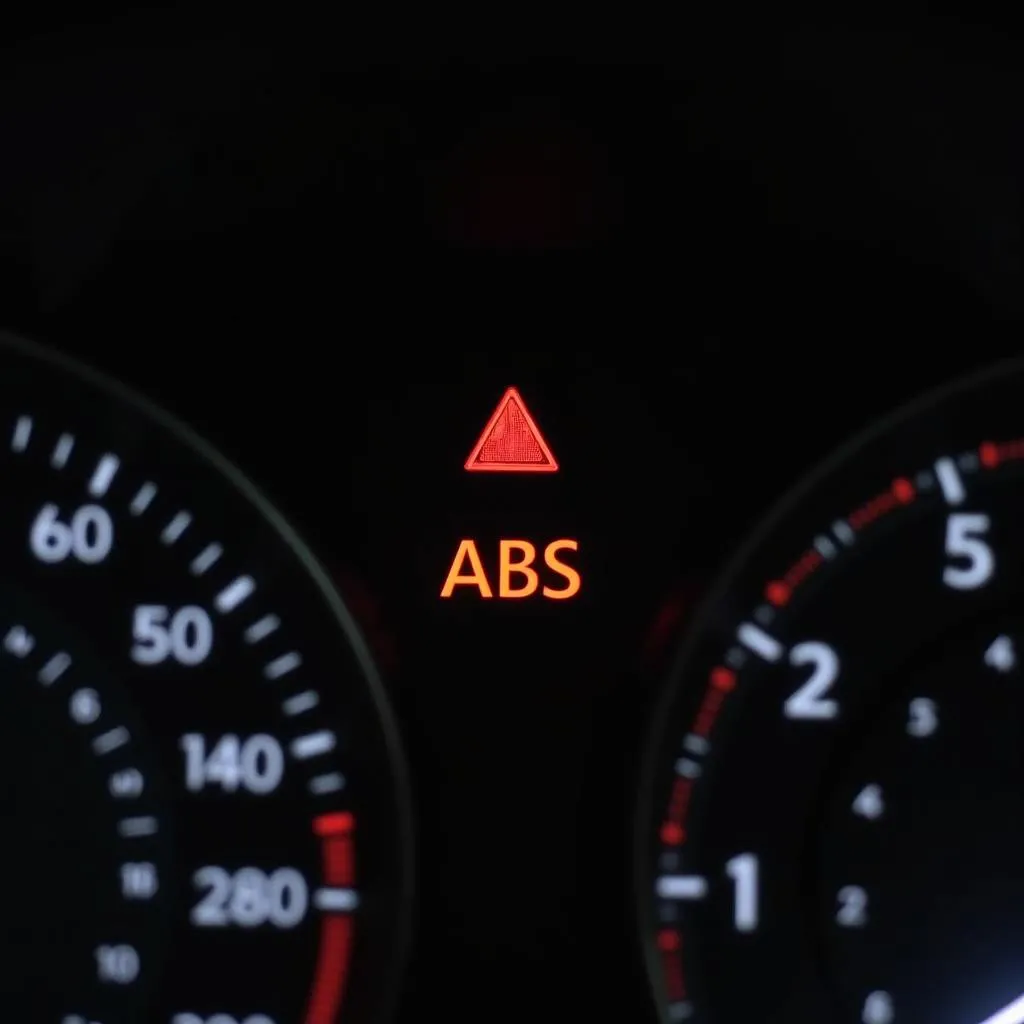Imagine this: you’re driving down a rain-slicked road in your trusty 2015 Ford Focus when a deer suddenly leaps in front of you. You slam on the brakes, but instead of your car skidding uncontrollably, you feel a pulsing under your foot, and your car comes to a safe stop. You have your car’s ABS, or Anti-lock Braking System, to thank for that. But what exactly does ABS mean on a car, and how does this often-overlooked safety feature work its magic? Let’s dive in and find out!
From a mechanic’s perspective, the ABS system is a marvel of modern automotive engineering. It utilizes sensors at each wheel to monitor speed and detect any sudden changes, like when a wheel locks up during hard braking. “Without ABS, a locked wheel loses traction and steering control,” explains fictional automotive expert Dr. Emily Carter in her book “Modern Car Tech Explained.” She goes on to say that “ABS allows the driver to maintain steering control while braking, significantly reducing stopping distances and the risk of accidents.”
What Does ABS Stand For, and What Does It Do?
ABS stands for Anti-lock Braking System. This system is designed to prevent your car’s wheels from locking up during hard braking. When wheels lock, you lose the ability to steer, which can be incredibly dangerous, especially in emergency situations or on slippery surfaces.
 ABS System Working
ABS System Working
Remember our hypothetical deer encounter? Without ABS, your Ford Focus would have likely skidded out of control, potentially resulting in a collision. Thankfully, the ABS system kicked in, allowing you to steer clear of danger while braking.
You can find more information about the meaning of various car symbols, including the ABS warning light, on our [Car Symbol Meanings] (https://diagxcar.com/car-symbol-meanings/) page.
How ABS Works: A Simplified Explanation
Here’s a simplified explanation of how ABS works:
- Wheel Speed Sensors: Your car’s ABS system uses sensors at each wheel to constantly monitor wheel speed.
- Control Unit: This information is sent to the ABS control unit, essentially the brains of the operation.
- Detecting Wheel Lockup: If the control unit detects that one or more wheels are about to lock up during braking, it takes immediate action.
- Modulating Brake Pressure: The control unit rapidly adjusts the brake pressure to that specific wheel, releasing and reapplying the brakes multiple times per second.
- Maintaining Traction: This rapid pulsing action prevents the wheels from locking up, allowing them to maintain traction with the road surface.
Why is ABS so Important?
ABS offers numerous safety benefits:
- Shorter Stopping Distances: By preventing wheel lockup, ABS can significantly reduce stopping distances, especially on slick surfaces like wet asphalt or icy roads.
- Improved Steering Control: With ABS engaged, you retain the ability to steer your vehicle while braking, allowing you to avoid obstacles and maintain control.
- Enhanced Vehicle Stability: ABS helps maintain vehicle stability during hard braking, reducing the risk of skidding or spinning out.
 Car Braking on Wet Road
Car Braking on Wet Road
Common Questions about ABS:
What does it feel like when ABS activates?
When ABS engages, you’ll typically feel a pulsing sensation in the brake pedal. You might also hear a clicking or buzzing sound. Don’t be alarmed; this is perfectly normal and indicates that the system is functioning correctly.
Do I need to pump the brakes if my car has ABS?
No, you should not pump the brakes if your car is equipped with ABS. Simply apply firm, continuous pressure to the brake pedal and let the system do its job.
How can I tell if my ABS is not working properly?
The most obvious sign of a malfunctioning ABS system is an illuminated ABS warning light on your dashboard. If this light comes on, it’s crucial to have your vehicle inspected by a qualified mechanic as soon as possible.
Beyond ABS: Other Important Car Safety Features
While ABS is a crucial safety feature, it’s important to remember that it’s just one piece of the puzzle. Other vital safety systems include electronic stability control (ESC), traction control, and advanced driver-assistance systems (ADAS).
To learn more about the fascinating world of car wraps and customization options, you can explore our [Car Wraps] (https://diagxcar.com/car-wraps/) section.
Need Expert Advice on Automotive Diagnostics?
At Diag XCar, we’re passionate about all things automotive, especially when it comes to vehicle diagnostics and repair. If you need help with diagnostics tools, including Dealer Scanner For European Cars, our team of experts is here to assist you. Contact us via Whatsapp at +84767531508 for 24/7 support.
 Modern Car Dashboard with ABS Warning Light
Modern Car Dashboard with ABS Warning Light
Understanding the meaning of ABS on your car and how it works is essential for safe driving. This technology has been instrumental in preventing accidents and saving lives. Remember, while ABS is a valuable safety net, responsible driving habits remain paramount.


